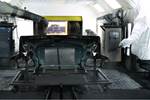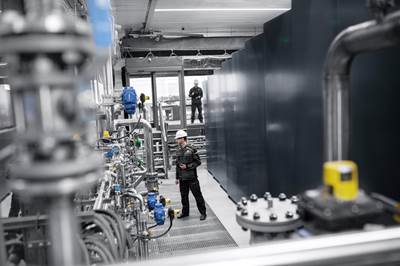Graphene Council seeks volunteers for graphene sector initiatives
Input from subject matter experts is encouraged for three task force projects covering LCA and sustainability, ASTM material specification and HSE and toxicity testing.
Source | Getty Images
(New Bern, N.C., U.S.) has launched three new initiatives in the graphene sector and is seeking volunteers to participate in their development. As graphene becomes increasingly used in major applications, especially within the composites space, end users and customers are requiring knowledge of graphene’s carbon footprint as a material used in their products.
The Graphene Council is seeking input from all interested stakeholders including graphene producers, customers and users of graphene, regulators and experts on LCA/GWP models. Note: Interested parties will need to apply as a volunteer separately for each task force group.
The task force groups are as follows. Click each link below to become a volunteer:
The drive globally for sustainable solutions means that every industry and material must be able to measure its carbon footprint. Increasingly materials must have a LCA or a global warming potential (GWP) value if the material is even considered for use.
The scope of the LCA task force will include (a) to define the start and endpoints for the Council’s measurements as well as input models for calculation and (b) to agree which international standards or models the Council will apply to calculate the graphene carbon footprint.
Volunteers will participate in the development of an ASTM Material Specification for different types and forms of graphene. The intent is to define specific groups of similar forms of graphene into distinct categories as part of a broader ASTM Material Specification to make it easier for users to specify and use graphene in their products.
The Graphene Council is a Member of the ASTM Engineered Carbons committee and the intent is to submit a completed definition of graphene materials in a form and structure recognized by ASTM for formal adoption. The Graphene Council has already compiled a database of approximately 700 individual forms and types of graphene based on commercially available technical data sheets that have been cataloged using the Graphene Classification Framework.
The scope of the ASTM Material Specifications Task Force is to organize and define real-world types and forms of graphene into an ASTM-approved format.
Participants will evaluate HSE and toxicity testing data for different types and forms of graphene materials. Understanding an accurate toxicity and safe use profile for graphene is both a priority for regulators and a critical issue for the viability of a robust graphene industry.
The scope of the HSE and Graphene Toxicity Testing will include (a) to inventory and evaluate any relevant, existing toxicological studies for specific types and forms of graphene, (b) to agree and define which internationally recognized and standardized testing protocols should be applied to graphene and (c) identify gaps in graphene toxicological testing and studies that are necessary to satisfy regulatory requirements.
The Council’s intent is to recommend to key national governments the need to fund robust toxicological testing (including a recommendation of the specific testing standards to be applied) to determine safe use practices for graphene that enable commercial use while protecting human and environmental health.
All work is conducted remotely using the Delphi method for consensus development to limit the time commitment of volunteers while providing everyone with a chance to contribute. Please note that this is a purely volunteer activity; there is no compensation.
Related Content
On the radar: Reusable launch vehicles, hypersonics make space more accessible
CFRP has become key to targeting efforts in reusing components like rocket stages, as well as the development of reusable hypersonic testbeds and spaceplanes, for increasing space commercialization.
Read MoreNanopoxy, Nione jointly develop nanostructured epoxy resin
Epoxies featuring nanometric niobium pentoxide particles promote toughness, UV radiation resistance and other performance gains.
Read MoreAernnova Composites, leader in composites R&D
This sidebar to CW’s July 2024 feature article reviews the company’s achievements and capabilities through years of composites R&D programs.
Read MoreComposites end markets: Batteries and fuel cells (2024)
As the number of battery and fuel cell electric vehicles (EVs) grows, so do the opportunities for composites in battery enclosures and components for fuel cells.
Read MoreRead Next
OCSiAl to construct European graphene nanotube facility in 2024
Synthesized graphene nanotubes and other nanotube derivatives at new hub in Serbia will meet customer demand for high-performance EV batteries, polymers.
Read MoreGraphene Council awards verified graphene functionality to Mito Material Solutions
Verification encompassed proof of scale for three to five metric tons annually of Mito’s functionalized graphene material, E-GO, provides opportunities for introduction into more robust applications.
Read MoreNanoXplore increases production capacity to meet graphene-enhanced SMC parts demand
Customer funds capacity expansion costs in first of two-part expansion toward 5-year plan in SMC lightweighting.
Read More












